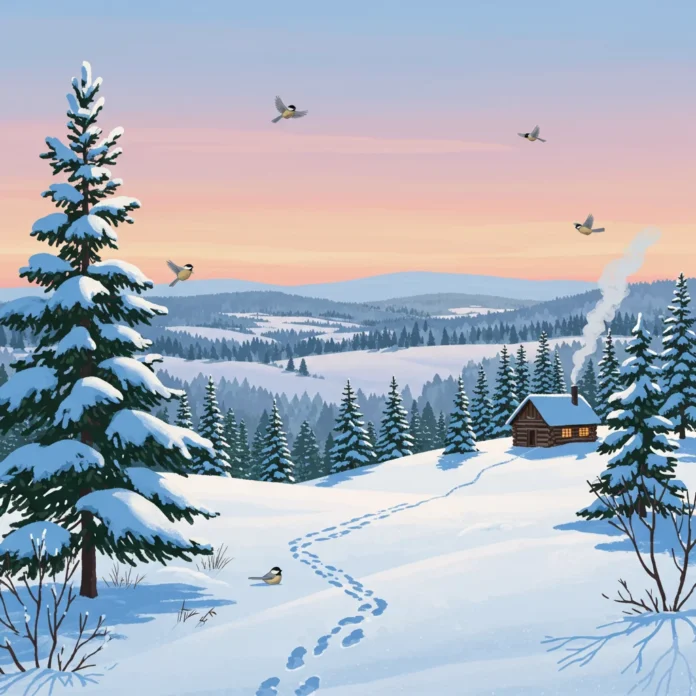Introduction to Chickadee Ridge: A Hiker’s Winter Wonderland
Chickadee Ridge transforms into a winter paradise each year, attracting outdoor enthusiasts with its snowy landscapes and serene atmosphere. The ridge offers panoramic vistas, crisp mountain air, and the soft crunch of snow beneath your boots. For those seeking both adventure and tranquility, this trail provides the perfect setting for a memorable cold-weather excursion.

We find the silence of winter at Chickadee Ridge to be particularly enchanting, broken only by the cheerful calls of chickadees and the occasional whisper of wind through snow-laden pines. Whether you’re a seasoned hiker or a family looking for a day in the snow, this destination delivers an unforgettable winter hiking experience.
Where Is Chickadee Ridge Located?
Chickadee Ridge is perched above the western shores of Lake Tahoe, straddling the border between California and Nevada. The trailhead is conveniently situated within the Tahoe Meadows area, granting easy access to both locals and travelers from nearby cities such as Reno and Carson City.
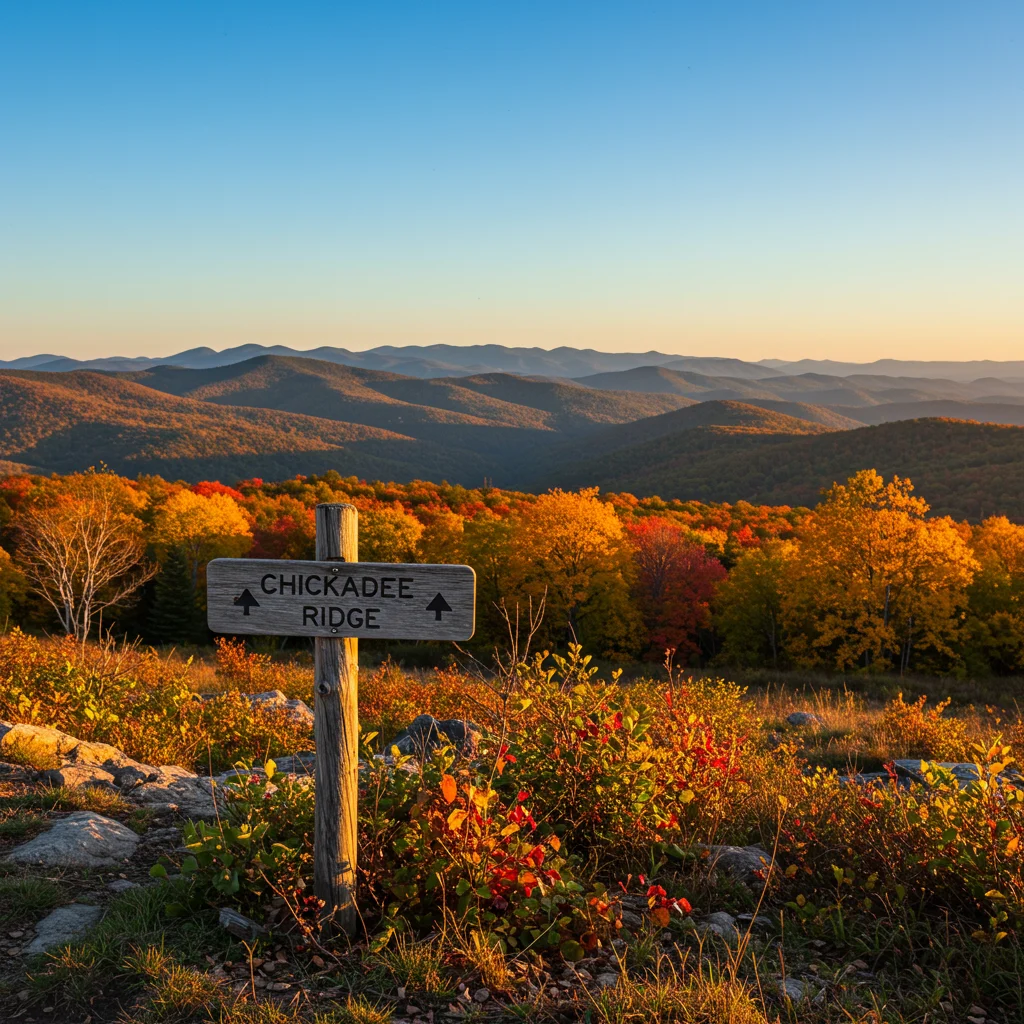
The ridge’s elevation and orientation provide sweeping views of Lake Tahoe, the Sierra Nevada, and the surrounding snow-dusted forests. Its location makes it a favorite for those who crave scenic winter hikes without venturing too far from modern amenities.
How to Get to Chickadee Ridge
Reaching Chickadee Ridge typically involves driving along the Mount Rose Highway (NV-431). The trailhead is located near Tahoe Meadows, with well-marked parking areas guiding visitors to the start of the hike. In winter, the roads are plowed regularly but can become icy, so we recommend checking road conditions before departure.
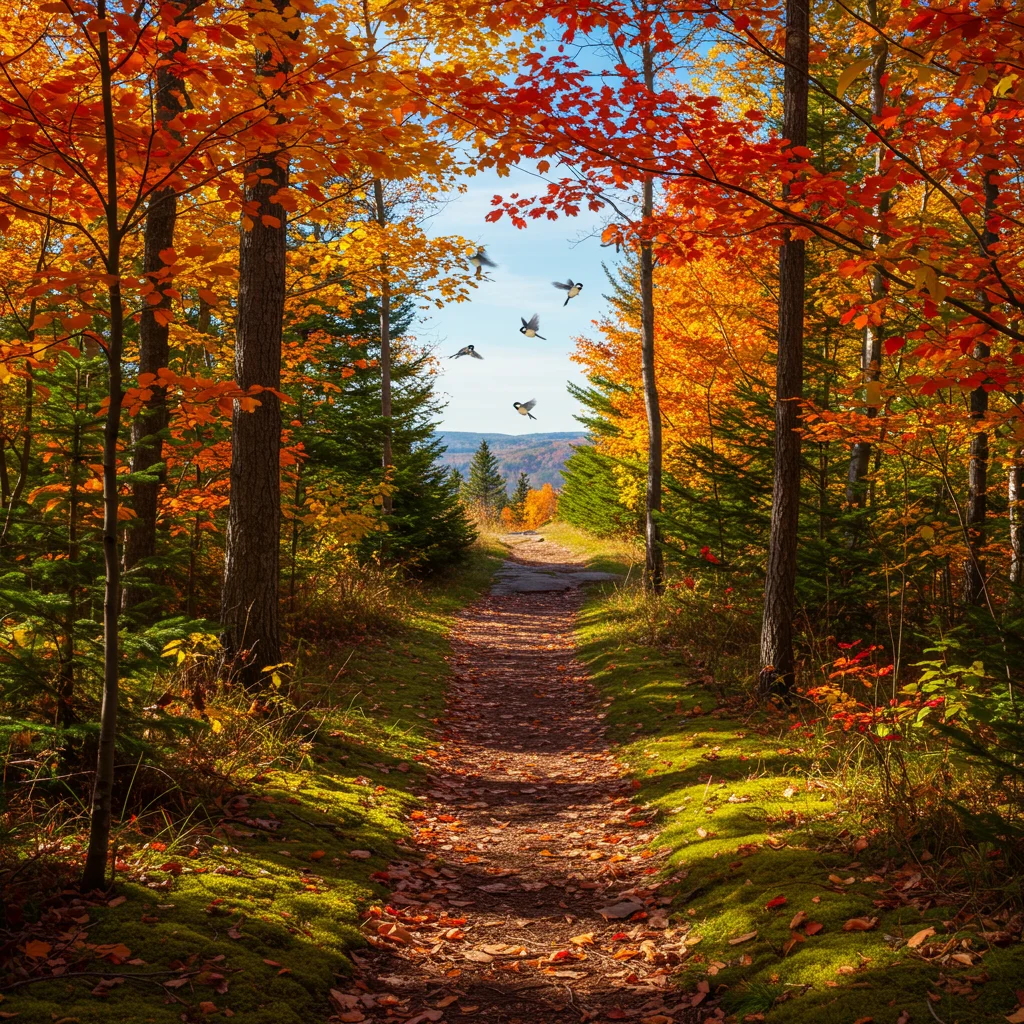
For those unfamiliar with winter driving in the mountains, carpooling with experienced drivers or utilizing ride-sharing options from Reno can be a wise choice. Some adventurers also coordinate with local hiking groups for shared transportation.
Best Time to Visit Chickadee Ridge in Winter
The most magical time to experience Chickadee Ridge is from December through March, when the landscape is blanketed in fresh snow. During these months, the ridge offers pristine conditions for snowshoeing and winter hiking.
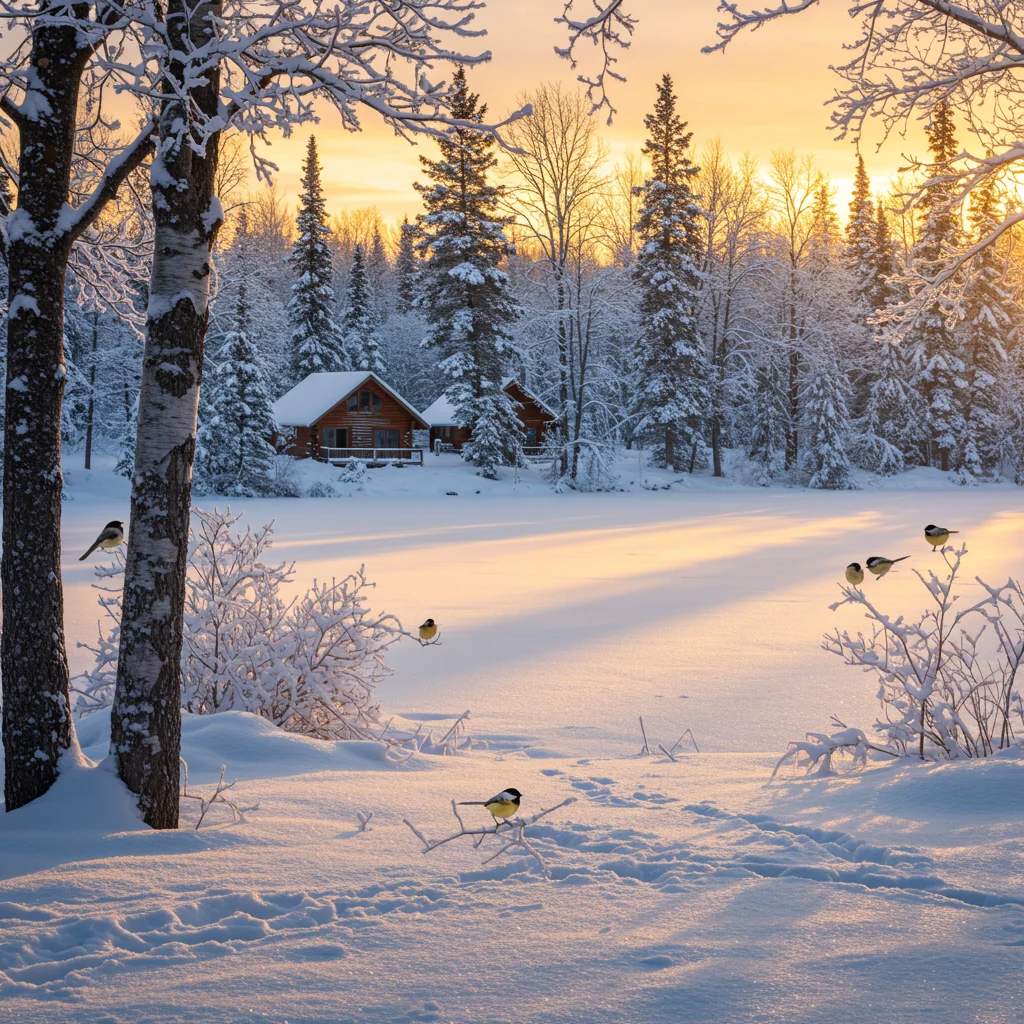
We suggest visiting on weekdays or early mornings for a quieter experience, as weekends can attract larger crowds. The winter sun casts a golden glow across the snowfields, especially just after sunrise and before sunset, making these hours ideal for photography and peaceful reflection.
Why Chickadee Ridge Is a Must-Visit for Winter Hikers
Chickadee Ridge stands out for its accessible beauty and peaceful trails. Unlike many high-elevation routes, this hike offers breathtaking views without grueling ascents or technical challenges, making it perfect for all skill levels.
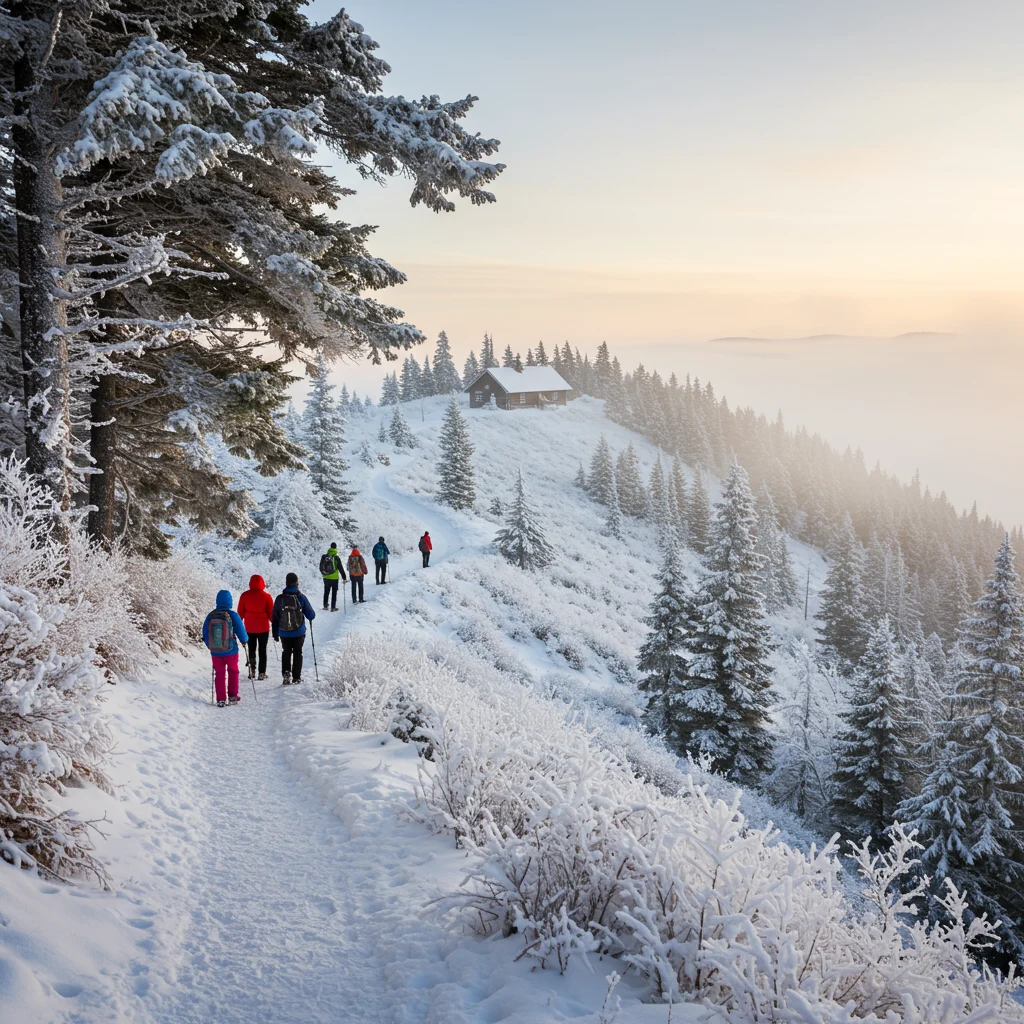
What sets this location apart is the opportunity to interact with friendly chickadees, who often approach hikers in search of seeds. The combination of wildlife encounters, panoramic lake views, and gentle terrain makes it a winter highlight for both locals and visitors. For those interested in other snowy adventures, you might enjoy our coverage of Poland’s winter wonderland in Zakopane and the Tatra Mountains.
A Brief History of Chickadee Ridge
The area surrounding Chickadee Ridge has a rich natural and cultural history. Long before it became a popular hiking destination, indigenous Washoe people traversed these lands, relying on their deep knowledge of the local environment.
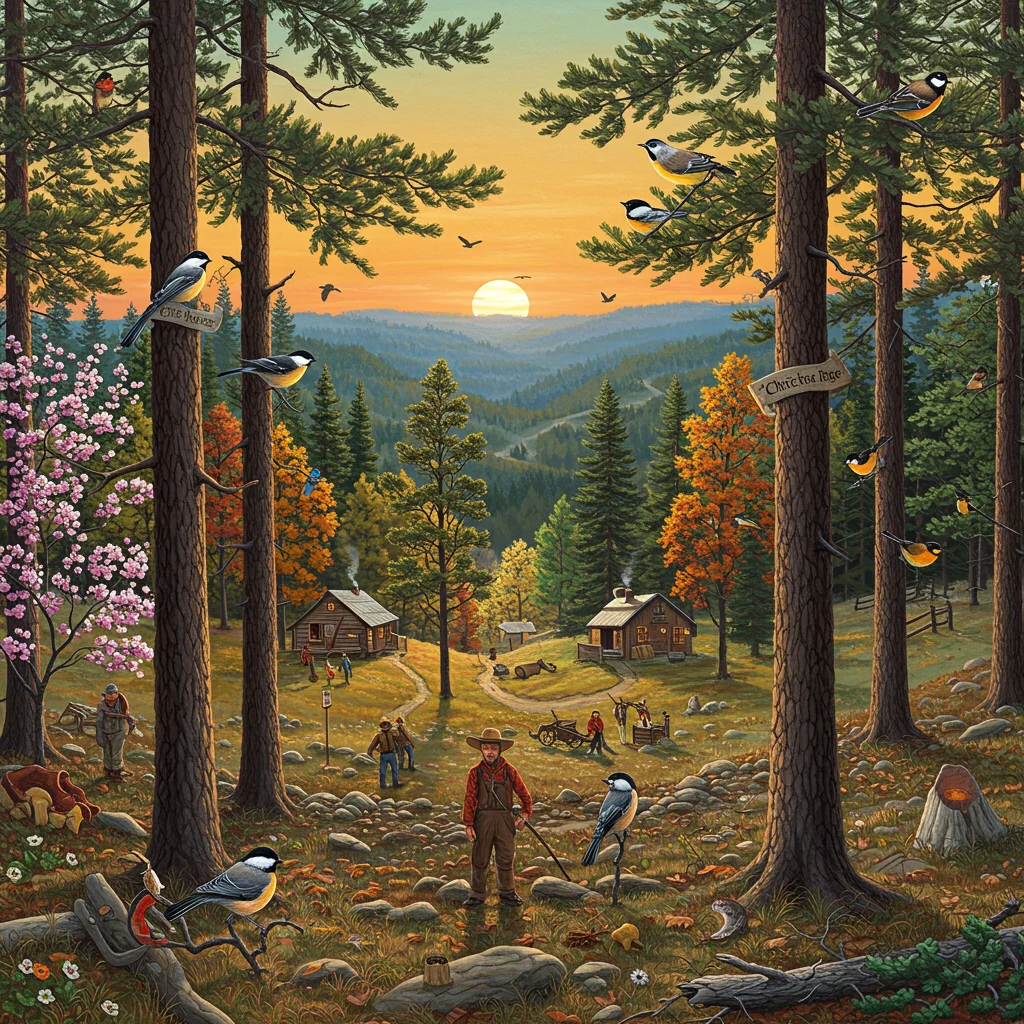
In more recent decades, the ridge has gained recognition as a recreational gem, celebrated for its biodiversity and accessible trails. Conservation efforts continue to protect the unique flora and fauna that make this region so special.
Chickadee Ridge Trail Overview
The Chickadee Ridge Trail is known for its gentle grades and well-marked paths. Starting from the Tahoe Meadows trailhead, the route meanders through open meadows, pine forests, and eventually climbs to the ridge itself.
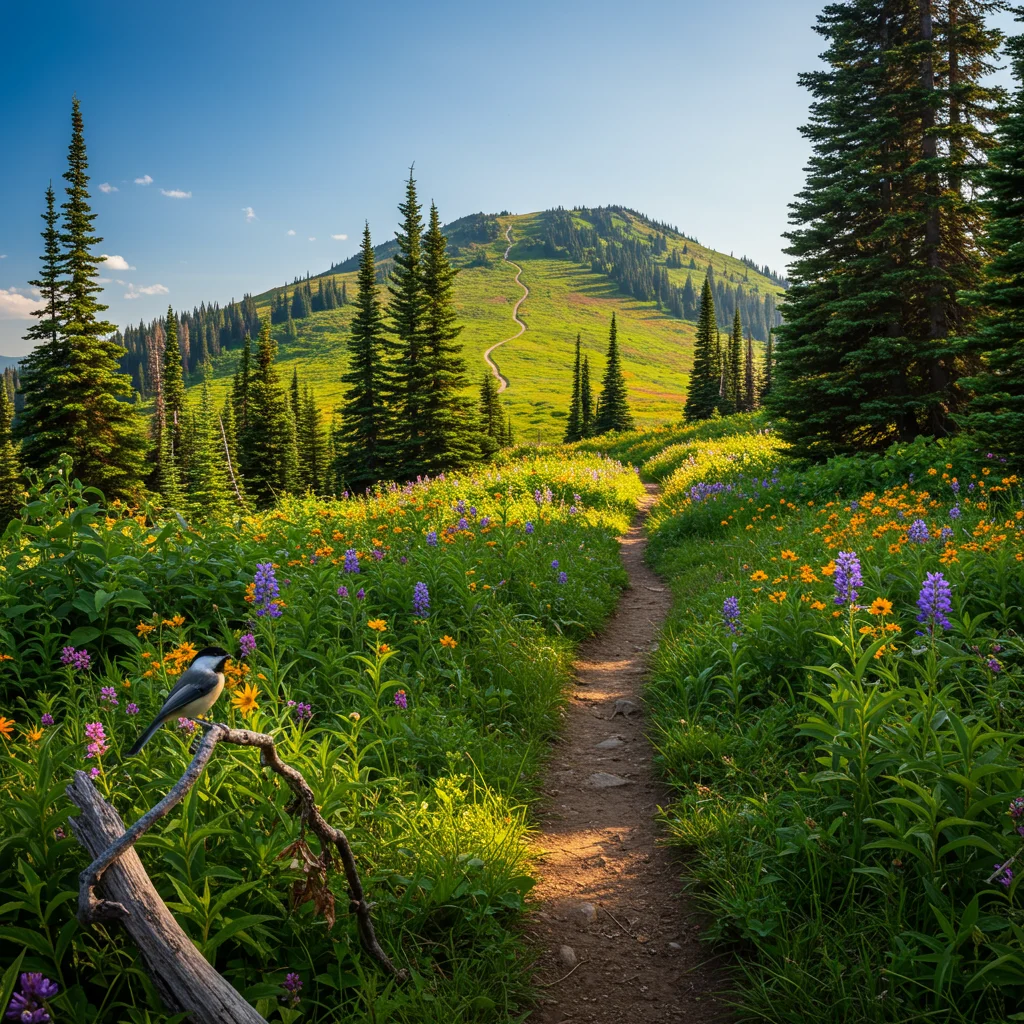
Along the way, hikers enjoy unobstructed views of Lake Tahoe and the distant peaks of the Sierra. The trail’s moderate length and elevation make it popular among families, beginners, and seasoned hikers alike.
Trail Difficulty: What to Expect
This trail is considered moderate, with a gradual incline that accommodates most fitness levels. The primary challenge comes from winter conditions, which can include deep snow, icy sections, and changing weather.
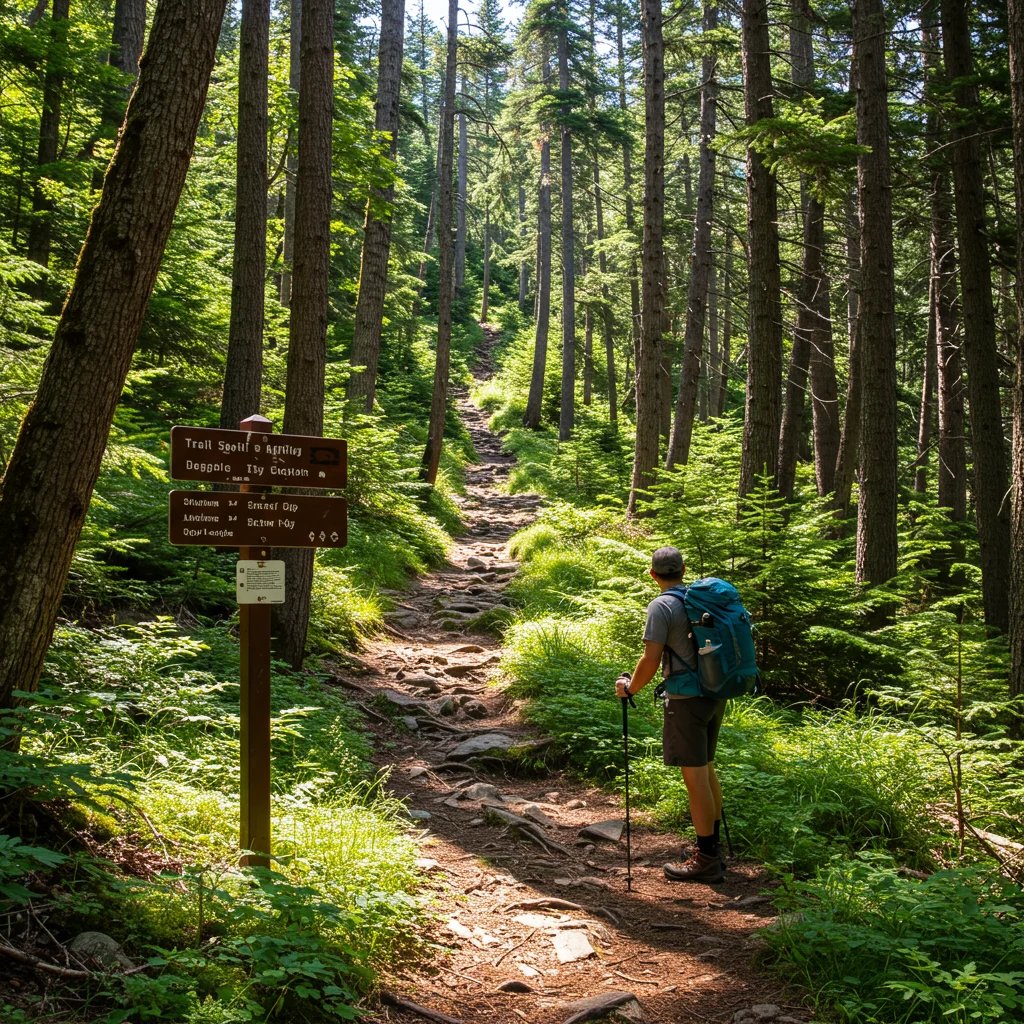
First-time winter hikers will appreciate the clearly visible trail markers and the relatively straightforward path. As we’ve discussed in our post about Madeira’s breathtaking hikes, preparation is key to enjoying any trail safely and comfortably.
How Long Is the Chickadee Ridge Hike?
The round-trip distance for the Chickadee Ridge hike is approximately 2.5 to 3 miles, depending on the exact route taken. Most hikers complete the journey in 2 to 3 hours, allowing plenty of time for breaks, birdwatching, and photography.

Shorter out-and-back options are available for those with limited time or when hiking with young children. The manageable distance makes this trail an appealing option for both casual walks and more vigorous winter outings.
Elevation Gain and Key Landmarks
Hikers can expect a total elevation gain of about 400 to 500 feet. The ascent is steady rather than steep, making it accessible for most.
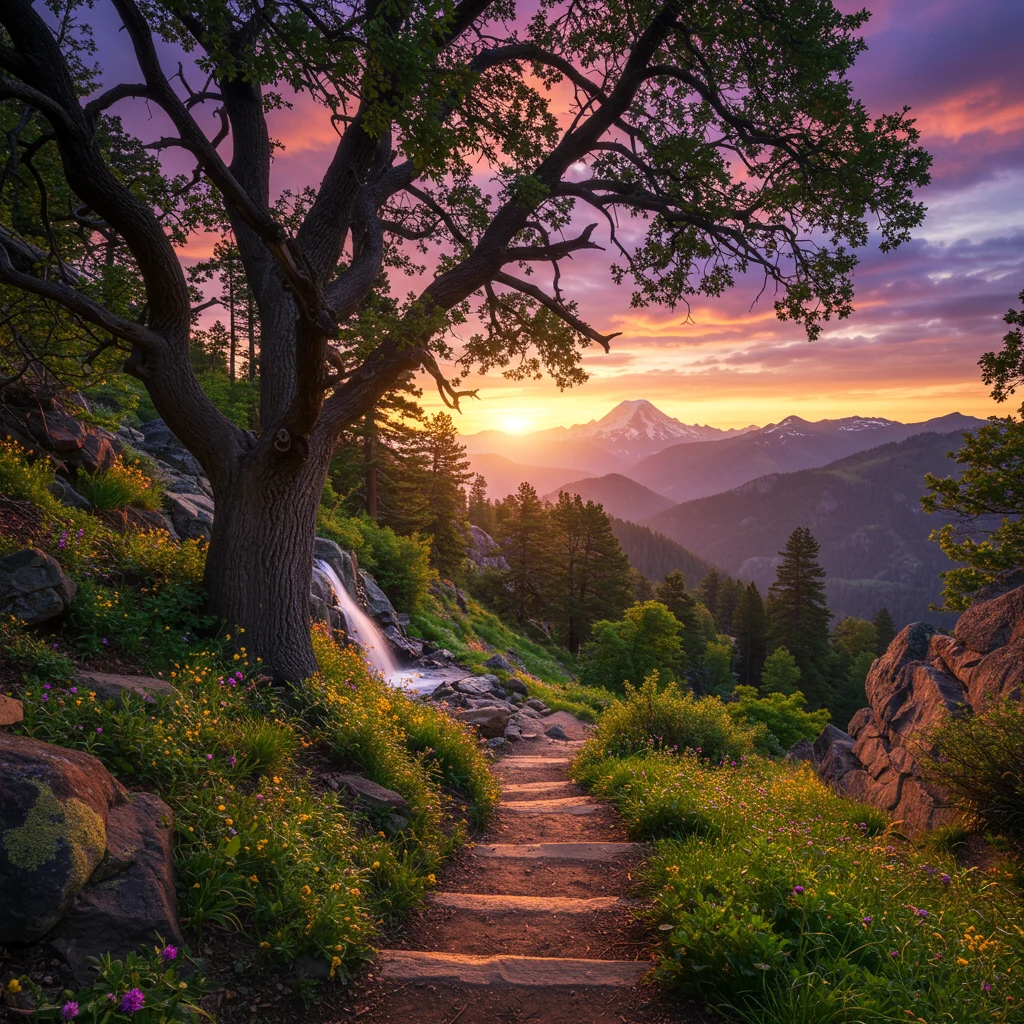
Key landmarks along the way include the open Tahoe Meadows, stands of snow-laden lodgepole pines, and the dramatic overlook atop Chickadee Ridge itself. On clear days, the view of Lake Tahoe shimmers beneath the winter sun, framed by mountain peaks.
Navigating the Trail in Snow
When snow blankets the ridge, the trail can become less defined. We recommend using GPS devices or smartphone apps with downloaded maps, as well as following visible tracks and trail markers.
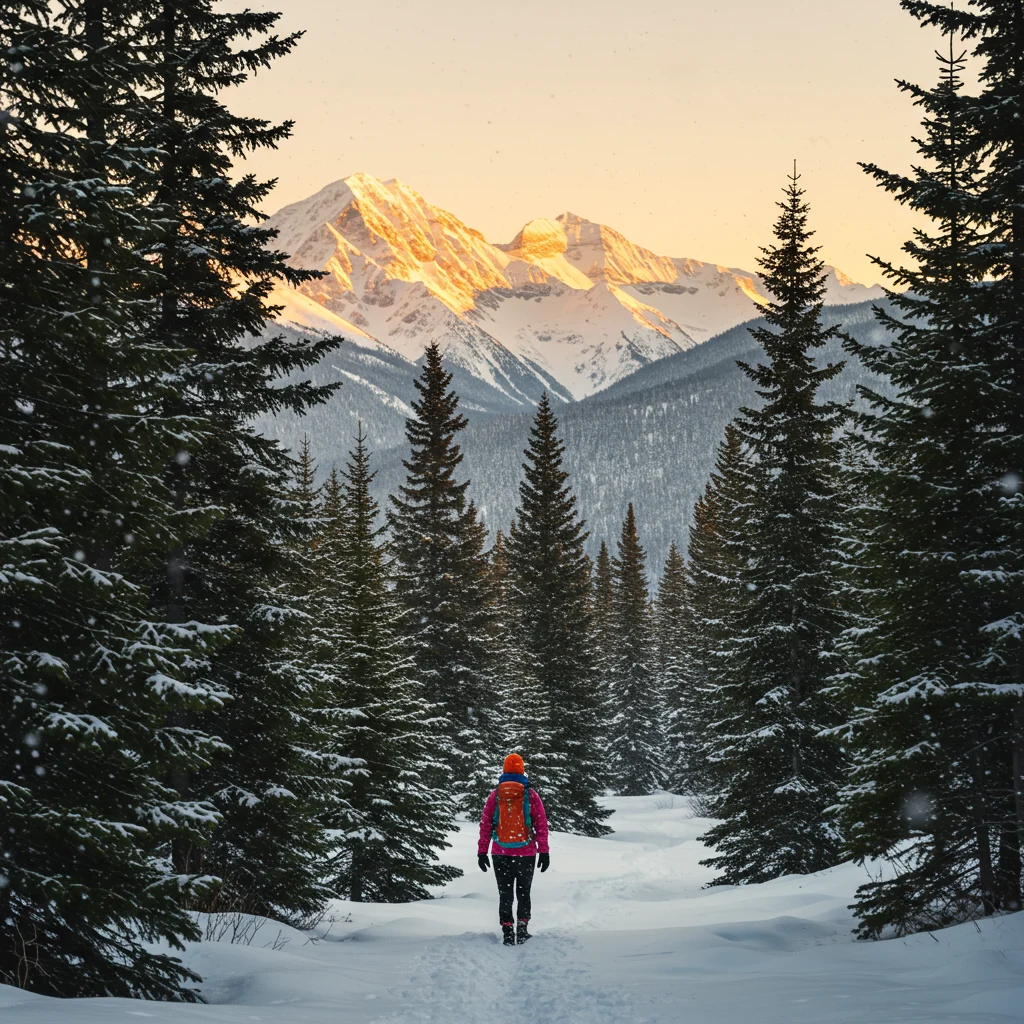
Snowshoes or traction devices are often necessary, especially after recent snowfall. Staying aware of your surroundings and checking for updated trail reports can help you avoid getting off course.
Winter Scenery: What Will You See?
Chickadee Ridge dazzles visitors with its snow-covered forests, frozen meadows, and sparkling lake views. The sunlight glints off tree branches heavy with fresh powder, while animal tracks crisscross the pristine landscape.
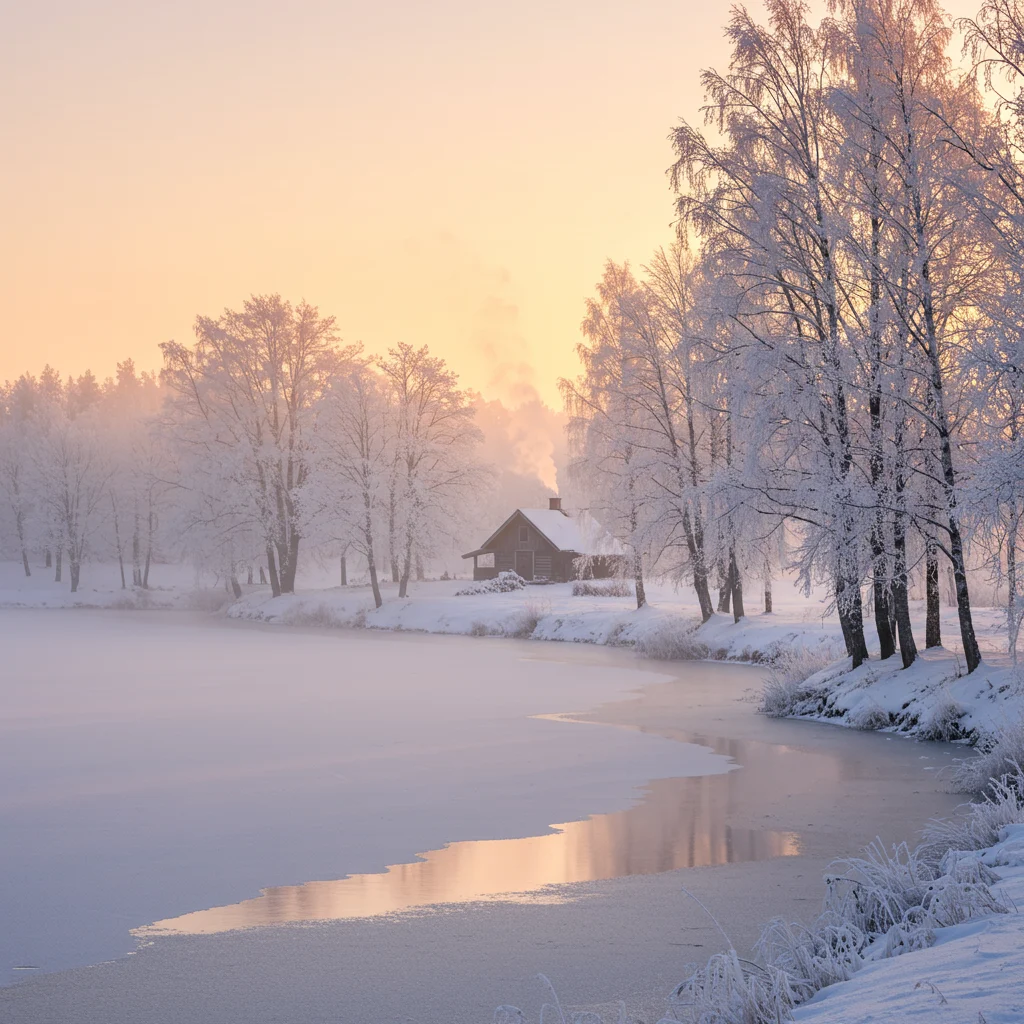
The quiet beauty of winter on the ridge encourages a sense of calm and wonder, making every step feel like a new discovery. Photographers and nature lovers will find endless inspiration in these scenes.
Wildlife Encounters on Chickadee Ridge
The ridge is renowned for its variety of wildlife, especially during the winter months when animals leave clear tracks in the snow. Patient hikers may spot chickadees, jays, squirrels, and even the occasional fox.
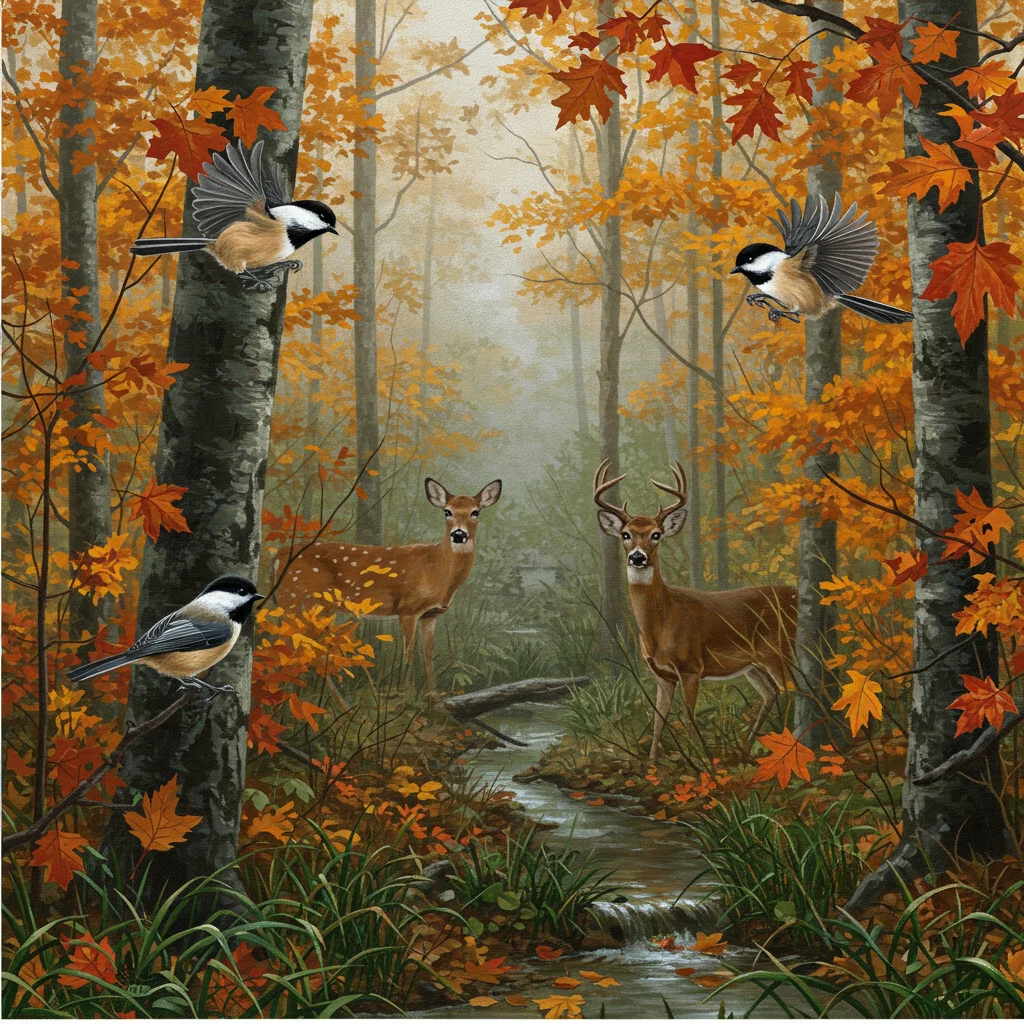
Observing these creatures in their winter habitat is a highlight of the Chickadee Ridge experience, but it’s important to respect their space and minimize disturbance.
Spotting Chickadees and Other Birds
Chickadees are the stars of the ridge, flitting from branch to branch and sometimes alighting on outstretched hands. Other avian visitors include mountain bluebirds, Steller’s jays, and woodpeckers.
Bringing a small bag of unsalted seeds can enhance your birdwatching, but we urge hikers to avoid hand-feeding to maintain natural behaviors.
Mammals and Tracks in the Snow
Winter unveils the secret movements of mammals, with tracks of rabbits, coyotes, and squirrels easy to spot in fresh snow. Early mornings or late afternoons are often the best times to catch glimpses of these animals.
Studying tracks can be a fun and educational activity for all ages, sparking curiosity about the lives of the ridge’s residents.
Photographing Wildlife Responsibly
Capturing wildlife on camera requires patience and respect. Use a zoom lens to photograph animals without getting too close, and avoid making loud noises or sudden movements.
As experts often say:
“Take only pictures, leave only footprints. Respecting wildlife ensures these magical encounters remain possible for future generations.”
For tips on photographing elusive animals in winter settings, you can find inspiration from our Arctic safari whale watching guide.
What Gear Do You Need for a Winter Hike at Chickadee Ridge?
Proper gear is essential for a safe and enjoyable winter hike. The right clothing, footwear, and safety equipment make all the difference in comfort and preparedness.

We recommend making a checklist before heading out to avoid forgetting any key items.
Essential Clothing for Cold Weather Hiking
Layered clothing is crucial for regulating body temperature. Start with a moisture-wicking base layer, add an insulating mid-layer, and finish with a waterproof, windproof outer shell.
Warm hats, gloves, and neck gaiters help protect against biting winds and dropping temperatures.
Recommended Footwear and Traction Devices
Insulated, waterproof boots are necessary for traversing snowy or slushy trails. Gaiters can help keep snow out of your boots.
Traction devices like microspikes or crampons provide additional grip on icy sections, reducing the risk of slips and falls.
Backpacks and Daypack Essentials
A well-packed daypack should include water, snacks, a first aid kit, extra layers, and a headlamp. We also suggest packing a thermos with a hot beverage for warmth and comfort during breaks.
For a comprehensive packing guide, our article on hiking to Las Tinajas Waterfall offers practical advice that applies to winter conditions as well.
Navigation Tools for Winter Conditions
Bring a map, compass, or GPS device, and ensure your phone is fully charged with offline maps downloaded. Winter weather can obscure trail markers, making navigation tools indispensable.
Marking your route or using a tracking app can also provide peace of mind for you and your group.
Safety Gear: Staying Prepared
Safety items such as an emergency blanket, whistle, and small repair kit should always be included. In avalanche-prone areas, carrying a beacon, probe, and shovel is recommended.
Let someone know your plans before heading out, and check in upon your return.
How to Prepare for Changing Weather
Mountain weather is unpredictable, especially in winter. Preparing for rapid changes can help you avoid uncomfortable or hazardous situations.
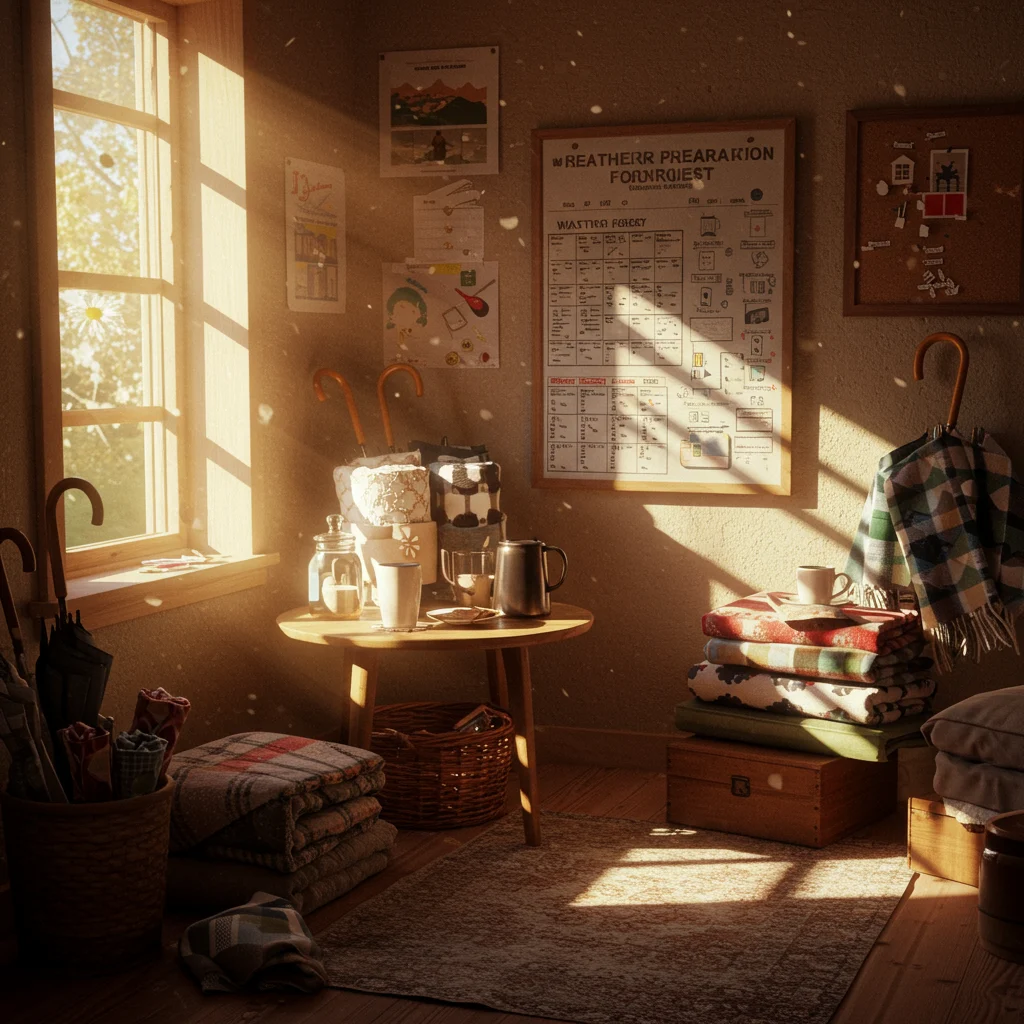
We encourage all hikers to adopt a proactive approach to weather preparedness.
Checking the Forecast Before You Go
Always consult local weather forecasts and avalanche reports before your hike. Sudden snowstorms or temperature drops can significantly impact trail conditions.
Websites and mobile apps provide real-time updates, making it easier to plan your outing safely.
Layering Techniques for Winter Comfort
Effective layering allows you to adjust to changing activity levels and weather. Shed layers when climbing to avoid overheating, and add them back during rest breaks to retain warmth.
Choosing breathable fabrics helps wick moisture and prevents chills.
Dealing with Sudden Snowstorms
If caught in a snowstorm, seek shelter among trees or natural windbreaks. Use your extra layers and emergency blanket to stay warm, and avoid crossing open meadows where visibility can drop quickly.
Remain calm and wait for conditions to improve before continuing.
Trail Etiquette and Leave No Trace Principles
Respect for nature and fellow hikers is central to the Chickadee Ridge experience. Following Leave No Trace principles ensures that the ridge remains beautiful and accessible for all.

Simple acts of courtesy and stewardship can have a lasting positive impact.
How to Respect Wildlife and Other Hikers
Give wildlife plenty of space, keep noise levels down, and yield the trail to uphill hikers. Friendly greetings can brighten the day for others sharing the path.
If you encounter birdwatchers or photographers, step aside to avoid disturbing their observations.
Waste Disposal and Environmental Impact
Pack out all trash, including food wrappers and tissues. Use designated waste bins at the trailhead, or carry a small bag for your litter.
Avoid disturbing plants or wildlife habitats, and leave natural objects where you find them.
Trail Markers and Staying on Path
Sticking to marked trails helps protect fragile ecosystems and prevents erosion. If snow covers the path, follow visible markers or GPS tracks.
Report any missing or damaged signs to authorities so they can be replaced promptly.
Parking and Access: What You Need to Know
Access to the trailhead is straightforward, but parking and road conditions can change rapidly during winter. Planning ahead can save time and reduce stress on arrival.

Be prepared for full lots during peak weekends and holidays.
Parking Lot Locations and Fees
The primary parking area is located at Tahoe Meadows, with overflow lots available nearby. Parking is typically free, but always check posted signs for seasonal restrictions.
Arriving early increases your chances of securing a spot close to the trailhead.
Winter Road Conditions and Accessibility
Mount Rose Highway is maintained throughout the winter, but storms can make driving treacherous. Carry chains when required and check for road closures before departing.
Accessible parking spots are available, but may be limited during heavy snowfall.
Public Transportation Options
Public transit options are limited, but some shuttle services operate between Reno and Lake Tahoe during peak winter months. Check schedules in advance, as service may be reduced during storms.
Carpooling with friends or local hiking groups can also help reduce parking congestion.
Snowshoeing at Chickadee Ridge
Snowshoeing is a popular way to traverse Chickadee Ridge’s snow-covered trails. The gentle terrain makes this activity accessible to beginners and experienced snowshoers alike.
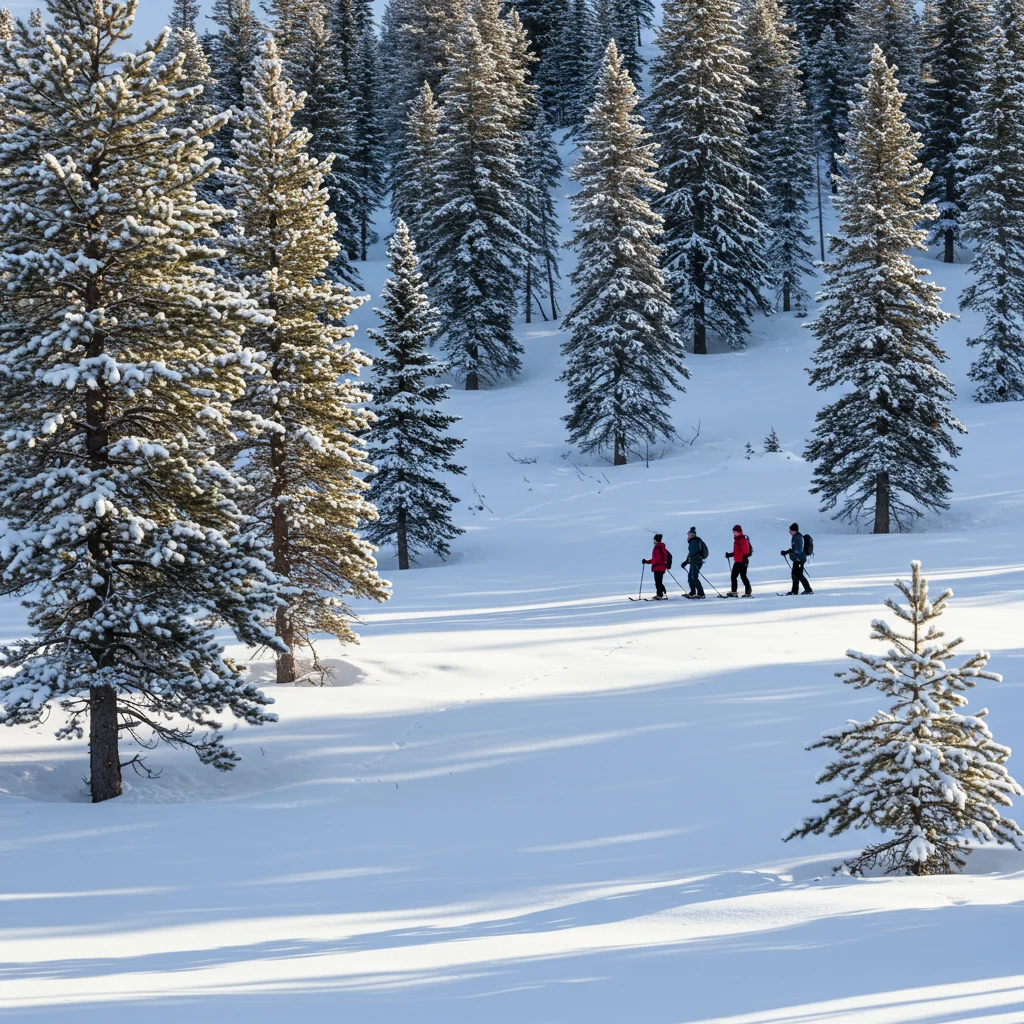
The ridge is a wonderful place to try snowshoeing for the first time, with scenic rewards at every turn.
Is Snowshoeing Necessary?
Snowshoes are recommended after fresh snowfall or when the trail is covered in deep powder. On well-packed trails, traction devices may suffice, but snowshoes provide extra stability and prevent post-holing.
Assess trail conditions before deciding which gear to bring.
Where to Rent or Buy Snowshoes
Outdoor shops in Reno, Incline Village, and Truckee offer snowshoe rentals and sales. Some stores also provide expert advice on sizing and fit.
Renting is a cost-effective option for first-timers or occasional users.
Tips for First-Time Snowshoers
Take short, deliberate steps to maintain balance, and use poles for added stability. Practice putting on and removing snowshoes at home before heading to the trail.
Dress in layers, and be prepared to adjust clothing as your activity level changes.
Cross-Country Skiing Opportunities
Chickadee Ridge offers excellent opportunities for cross-country skiing, especially for those who enjoy gliding through quiet, snow-covered landscapes.

The gentle grades and open meadows make this area suitable for both classic and skate skiing styles.
Ski Trail Connections Near Chickadee Ridge
Several established ski trails connect with the Chickadee Ridge route, allowing for longer circuits and varied terrain. Tahoe Meadows is a popular starting point for these loops.
Maps at the trailhead detail available routes and difficulty levels.
Guided Ski Tours and Lessons
Local outfitters offer guided tours and beginner lessons for those new to cross-country skiing. These services can enhance your experience by providing instruction, safety tips, and local insights.
Booking a guided tour is a great way to explore the area with confidence and learn more about winter travel in the backcountry.
Photography Tips for Capturing Winter Beauty
The ridge’s snowy vistas and dramatic light make it a paradise for winter photographers. Capturing these moments requires a mix of timing, equipment, and creative vision.
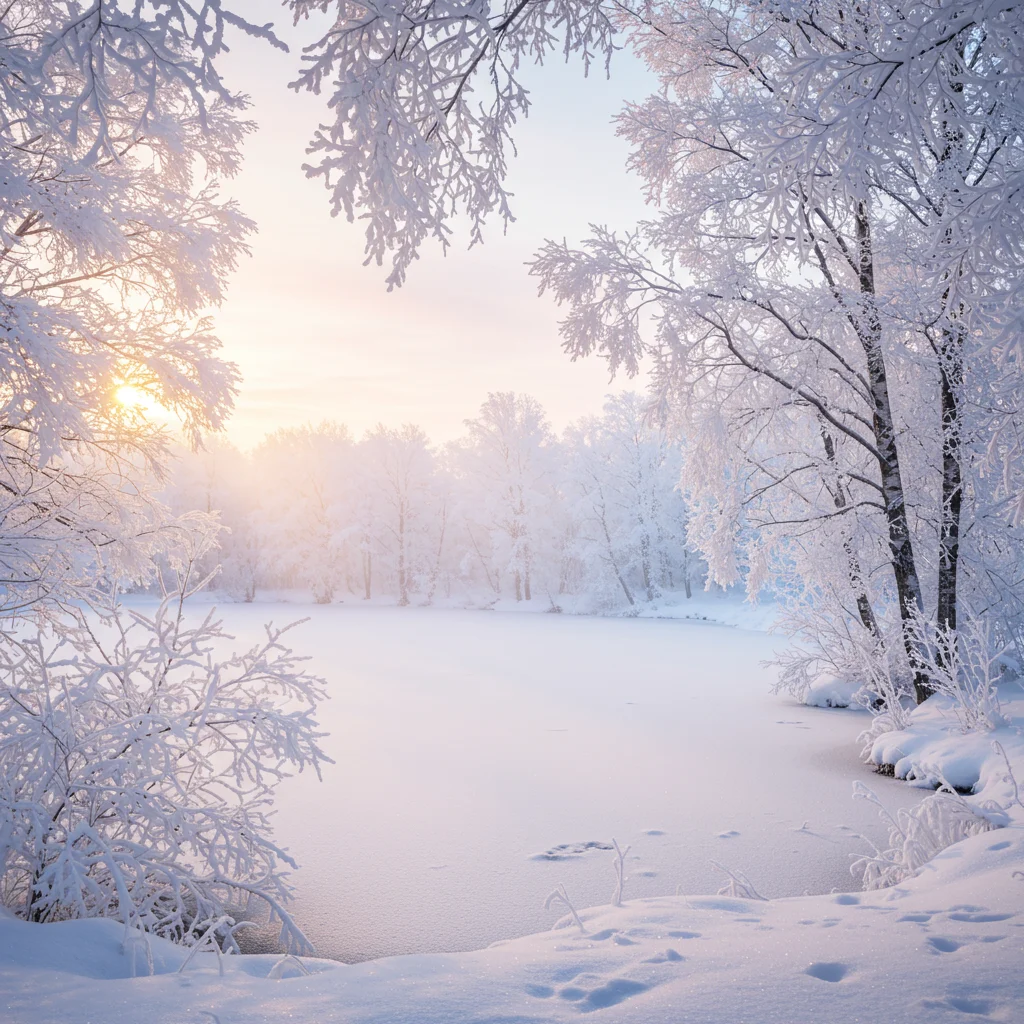
We encourage you to experiment with different perspectives and settings to make the most of the stunning scenery.
Best Times of Day for Photos
Sunrise and sunset offer the most dramatic lighting, casting long shadows and painting the snow in golden hues. Overcast days can provide soft, even light that highlights subtle textures.
Plan your hike to coincide with these times for the best photographic results.
Camera Gear for Cold Conditions
Cold weather can quickly drain camera batteries, so bring extras and keep them warm in an inner pocket. A weather-sealed camera or protective case helps shield your gear from snow and moisture.
A lightweight tripod and lens cloth are also useful for stabilizing shots and cleaning off snowflakes.
Composing Winter Landscape Shots
Look for leading lines, such as trails or tree branches, to draw the viewer’s eye into the scene. Including a person or animal in your frame can add a sense of scale and adventure.
Remember to adjust exposure compensation to prevent the snow from appearing gray in your photos.
Family-Friendly Winter Activities at Chickadee Ridge
Chickadee Ridge welcomes families with its gentle trails, engaging wildlife, and opportunities for snow play. The accessible terrain and short distance make it an ideal winter outing for all ages.
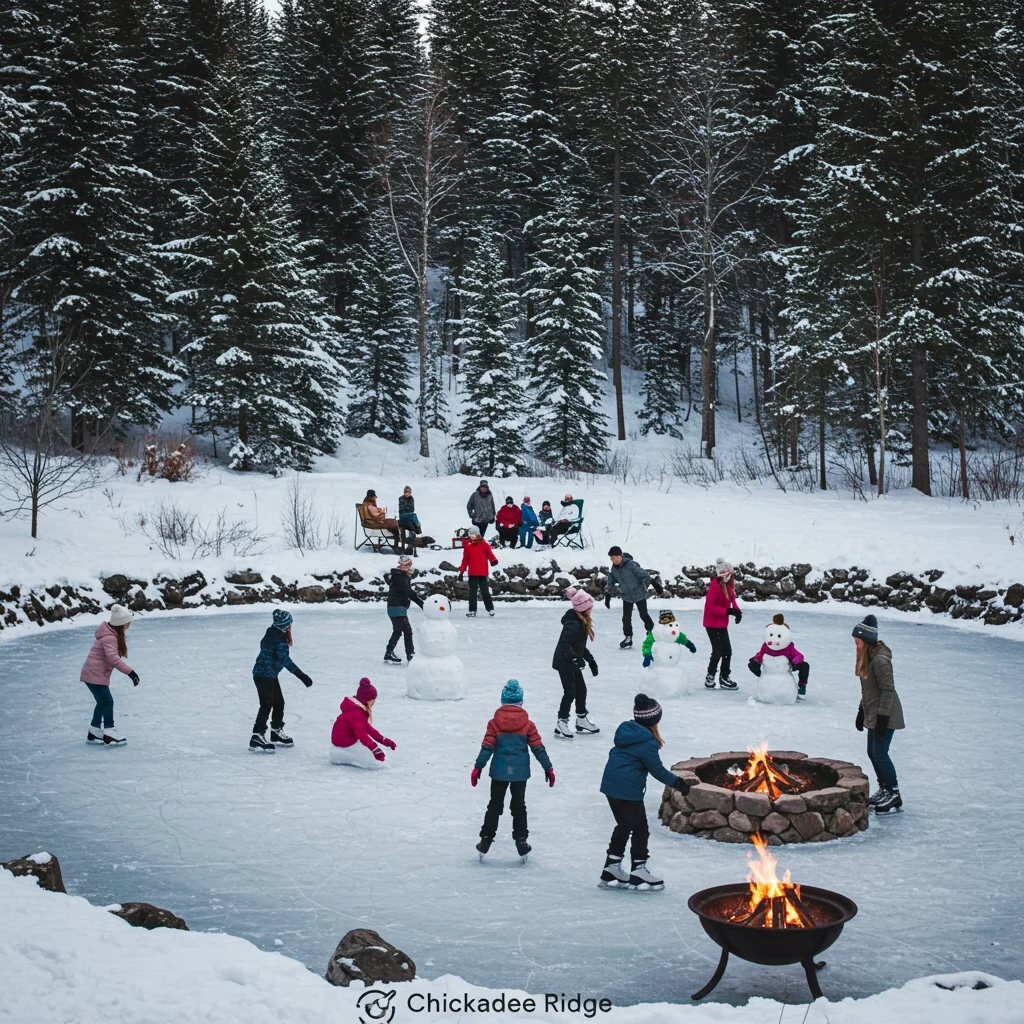
With a little planning, families can enjoy a safe and memorable day in the snow.
Is Chickadee Ridge Suitable for Kids?
The trail’s moderate length and gradual incline are well-suited to children. Wide, open meadows offer plenty of room for snowball fights, sledding, and building snowmen.
We recommend supervising young hikers closely, especially near steep drop-offs or during icy conditions.
Fun Snow Play Ideas for Families
Bring a small sled, snow molds, or shovels for creative play in the meadows. Scavenger hunts for animal tracks or birdwatching can keep kids engaged and curious.
Warm drinks and snacks help maintain energy and morale during breaks.
Safety Tips for Hiking with Children
Dress children in layers, and check frequently for signs of cold or fatigue. Set a comfortable pace and plan for frequent rest stops.
Teach kids to stay within sight and reinforce the importance of sticking to the trail.
Dog-Friendly Policies and Tips
Chickadee Ridge is a dog-friendly destination, provided pet owners follow local regulations and practice good trail etiquette. The snowy landscape is as enjoyable for four-legged companions as it is for humans.

Preparation ensures a fun and safe outing for everyone.
Leash Rules and Pet Etiquette
Dogs must be kept on a leash at all times to protect wildlife and respect other hikers. Carry waste bags and pick up after your pet, disposing of waste at designated bins.
Not all dogs are comfortable around snow or crowds, so monitor your pet’s behavior and be considerate of others.
Protecting Your Dog in Winter Weather
Cold temperatures and icy trails can pose risks to dogs. Use booties to protect their paws from ice and salt, and bring a jacket for short-haired breeds.
Pack extra water and snacks for your dog, and watch for signs of hypothermia or fatigue.
Nearby Amenities and Services
While Chickadee Ridge offers a remote feel, several amenities are available within a short drive. Preparing in advance helps ensure a comfortable and enjoyable visit.

Knowing what’s available nearby can also be helpful in case of emergencies or sudden weather changes.
Restrooms and Warming Huts
Seasonal restrooms are available at the main trailhead, with additional facilities at nearby recreation areas. Occasionally, warming huts may be open during peak winter weekends.
Check current conditions, as some facilities may close during extreme weather.
Cafes and Restaurants Near the Trailhead
Several cafes and restaurants can be found in Incline Village and along the Mount Rose Highway. These spots offer a chance to warm up and enjoy a meal after your hike.
Hot chocolate, hearty soups, and freshly baked pastries are local favorites during winter months.
Gear Shops and Emergency Services
Outdoor retailers in Reno and Incline Village provide gear rentals, repairs, and last-minute supplies. Emergency services are available via 911, but response times can be delayed during storms or heavy snowfall.
Carry a basic first aid kit and know the location of the nearest hospital or urgent care center.
Where to Stay: Lodging Options
A range of lodging options is available near Chickadee Ridge, from cozy hotels to rustic cabins. Advance reservations are highly recommended during the busy winter season.

Choosing accommodations close to the trailhead can maximize your time on the snow.
Hotels and Cabins Near Chickadee Ridge
Incline Village and Tahoe City offer a variety of hotels, lodges, and vacation rentals. Many properties feature fireplaces, hot tubs, and other winter comforts.
Rustic cabins provide a charming, secluded atmosphere for those seeking a more traditional mountain experience.
Camping in Winter: Is It Possible?
Winter camping is permitted in some areas near the ridge, though it requires specialized gear and experience. Campers should be prepared for freezing temperatures and changing weather.
Designated backcountry sites are the best option for those wishing to extend their adventure overnight.
Booking Tips for Peak Winter Season
Reserve your accommodations well in advance, especially around holidays and weekends. Flexible travel dates can help you secure better rates and availability.
Check cancellation policies in case weather conditions force a change of plans.
Planning Your Chickadee Ridge Winter Adventure
Organizing your trip in advance allows you to make the most of your time on the ridge. Whether you have a single day or a long weekend, there are plenty of ways to enjoy this winter wonderland.

Combining Chickadee Ridge with other local attractions can create a diverse and memorable itinerary.
Sample Itinerary for a Day Hike
Start with an early morning arrival at the trailhead, followed by a leisurely hike up to the ridge. Enjoy a picnic lunch with lake views, then return in the afternoon for coffee or hot chocolate at a nearby café.
Allow time for snow play, photography, and wildlife observation along the way.
Multi-Day Trip Ideas in the Area
Extend your stay with visits to nearby ski resorts, snow parks, or natural hot springs. Exploring the greater Lake Tahoe region offers opportunities for snowmobiling, ice skating, and more.
Those with extra time may wish to visit additional hiking destinations, as we highlighted in our story on the Big Island’s volcanoes and waterfalls.
Combining Chickadee Ridge with Other Local Attractions
Pair your hike with a visit to Sand Harbor, Spooner Lake, or the Tahoe Rim Trail for a full day of winter activities. Local museums and art galleries provide indoor options for snowy afternoons.
Many visitors also enjoy exploring the vibrant dining scene in Incline Village after a day outdoors.
Safety Considerations for Winter Hiking
Safety should always be a top priority when venturing into winter wilderness. Understanding the risks and preparing accordingly helps prevent accidents and ensures a positive experience.
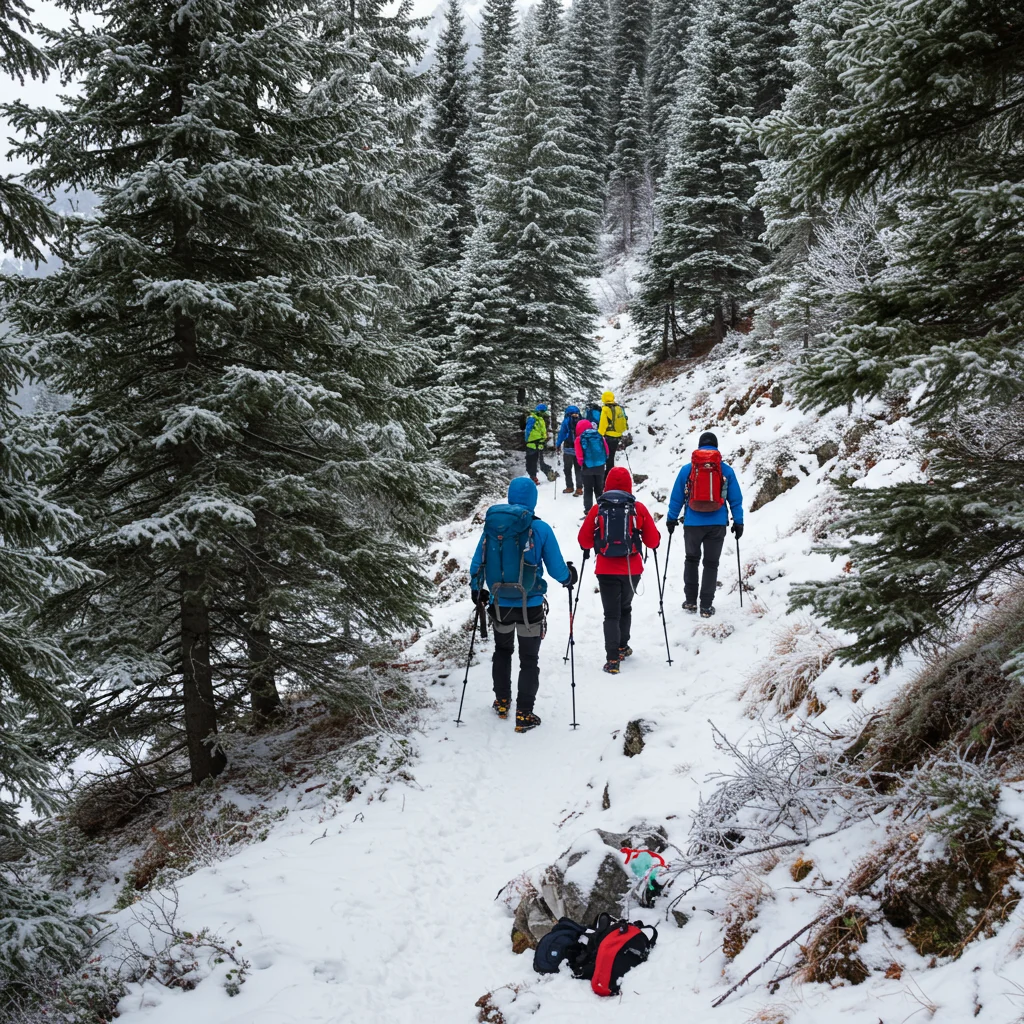
Reviewing safety guidelines before your trip empowers you to make informed decisions on the trail.
Avalanche Awareness and Risks
While Chickadee Ridge is generally considered low risk for avalanches, nearby slopes and backcountry areas may be more hazardous. Check current avalanche forecasts and avoid steep, open slopes after heavy snowfall.
Carrying avalanche safety equipment is recommended if you plan to venture off-trail.
What to Do in an Emergency
In case of injury, lost hikers, or severe weather, call 911 and provide your exact location. Stay put if you are lost, conserve energy, and use signaling devices to attract attention.
Carrying a personal locator beacon or satellite messenger can be lifesaving in remote areas.
Staying Connected: Cell Coverage and GPS
Cell service is generally reliable near the trailhead but may be limited higher up or during storms. Download offline maps and inform a friend or family member of your plans.
A GPS device or smartphone with tracking capabilities can assist with navigation and emergency communication.
Stories and Testimonials from Past Hikers
Personal stories from fellow hikers can inspire and inform, offering practical tips and memorable moments from the trail.
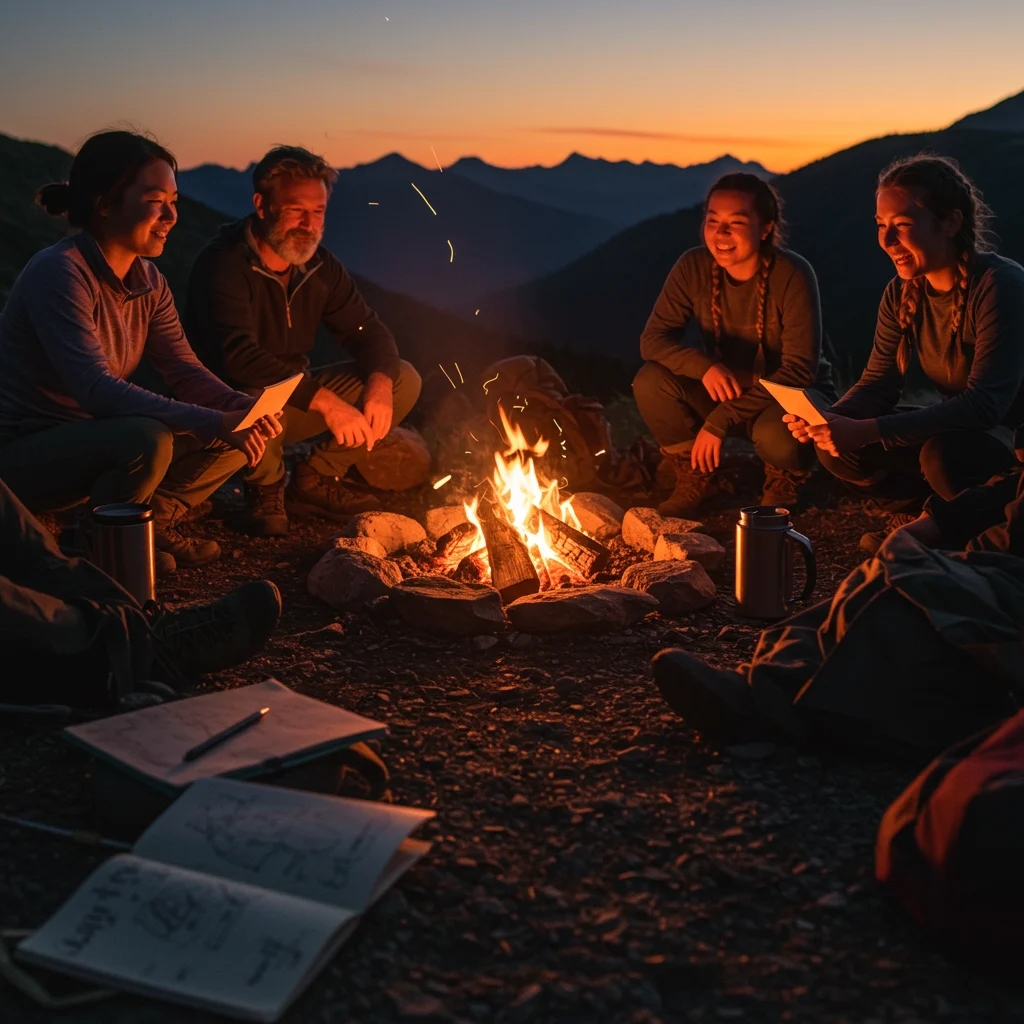
Many visitors recall the joy of feeding chickadees, watching the sunrise over Lake Tahoe, or sharing laughter with friends in the snow.
Memorable Experiences Shared by Visitors
One hiker described the exhilaration of reaching the ridge just as the clouds parted, revealing a sparkling lake framed by snow-capped peaks. Another family recounted their delight at spotting fresh fox tracks winding through the trees.
These shared experiences highlight the sense of community and adventure that defines Chickadee Ridge.
Lessons Learned from Winter Hiking at Chickadee Ridge
Past hikers emphasize the importance of preparation, patience, and flexibility. Packing extra layers, starting early, and respecting changing weather are common themes in their advice.
Learning from others’ experiences can help you avoid common pitfalls and enjoy a safer, more rewarding outing.
Frequently Asked Questions About Chickadee Ridge
We’ve compiled answers to some of the most common questions about visiting Chickadee Ridge in winter.
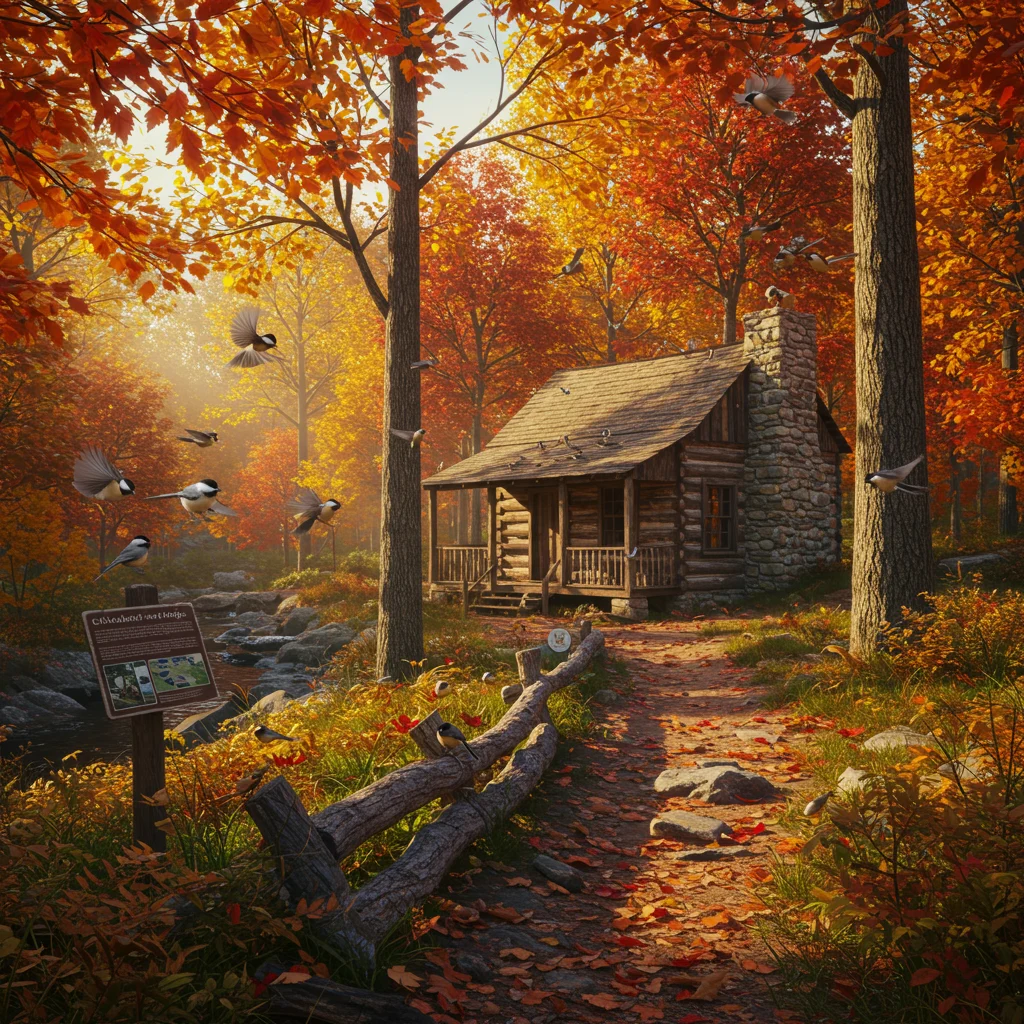
If you have additional questions, local visitor centers and online forums are valuable resources.
Is Chickadee Ridge Open Year-Round?
Yes, the trail is open year-round, but winter access depends on snow and road conditions. Always check current updates before heading out.
Some amenities may be closed during the off-season or after major storms.
Do You Need a Permit to Hike Chickadee Ridge?
No permits are required for day hiking at Chickadee Ridge. However, parking restrictions or fees may apply during peak times.
Special permits may be needed for overnight camping or large groups.
Are There Guided Tours Available?
Several local outfitters offer guided snowshoeing and cross-country skiing tours. Booking a guided experience can enhance safety and enjoyment, especially for first-timers.
You can find tours and book activities through reputable providers for added convenience.
Tips for First-Time Winter Hikers
Venturing out on a winter hike for the first time can be both exciting and intimidating. We’ve gathered practical tips to help build your confidence and enjoyment.
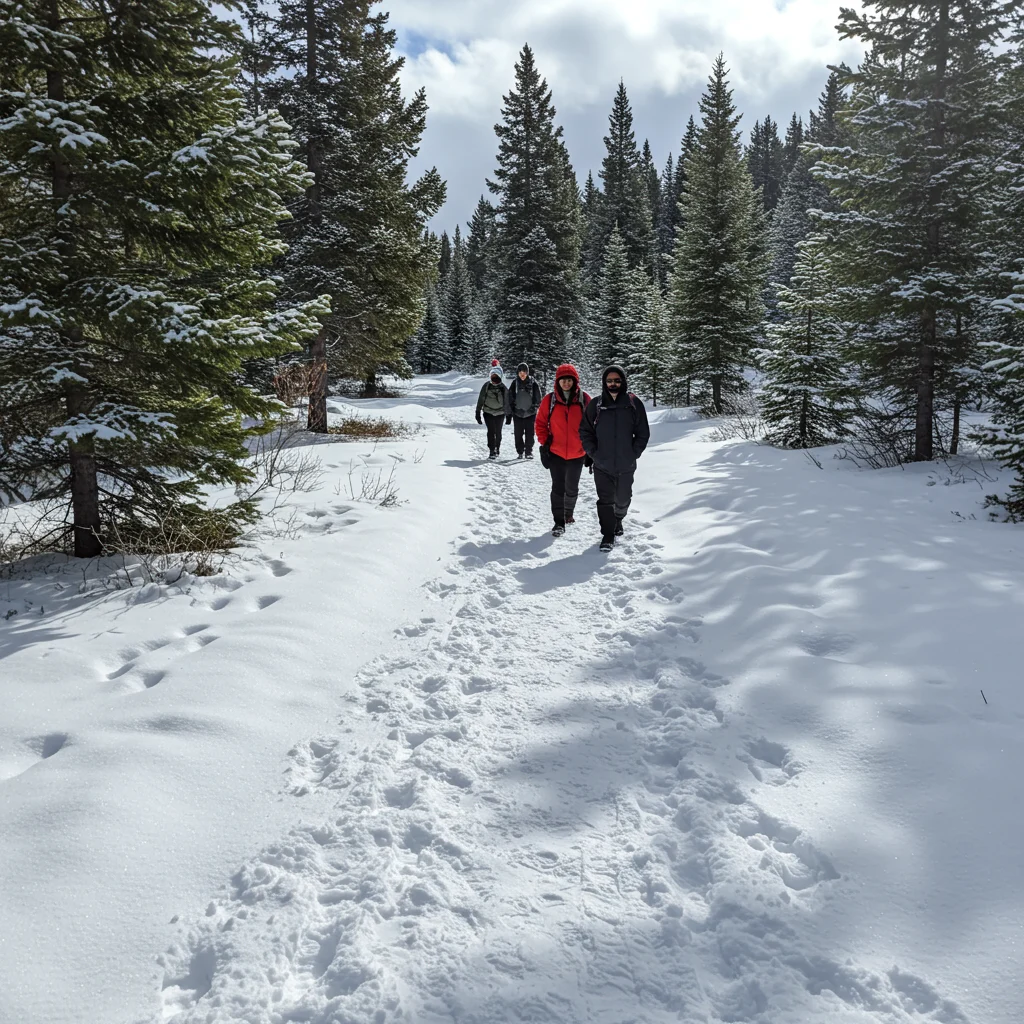
Learning from experienced hikers and starting with accessible trails like Chickadee Ridge can set you up for success.
Common Mistakes to Avoid
Avoid starting late in the day, underestimating the cold, or neglecting to pack essential safety gear. Dress in layers and bring more food and water than you think you’ll need.
Don’t rely solely on your phone for navigation; always have a backup plan.
How to Build Confidence on the Trail
Start with shorter hikes, gradually increasing distance and difficulty as you gain experience. Hike with friends or join local groups to learn best practices.
Celebrate small milestones and reflect on what you learn with each outing. If you’re seeking more inspiration, our post on Madeira’s top hiking experiences offers additional guidance for beginners.
Resources for Planning Your Trip
A successful winter adventure starts with the right information. Reliable resources help you stay informed and prepared for changing trail conditions.

We recommend consulting official maps, weather updates, and local hiking communities before your visit.
Official Maps and Trail Guides
Download maps from the Tahoe Rim Trail Association or local visitor centers. Printed guides are also available at outdoor shops and ranger stations.
Mark your route in advance to avoid confusion on snow-covered trails.
Weather and Avalanche Forecast Websites
Check the National Weather Service and Sierra Avalanche Center for up-to-date forecasts. These sites provide detailed information on snowpack, storms, and avalanche risk.
Regularly monitoring conditions helps you make informed decisions before and during your hike.
Local Hiking Groups and Forums
Online forums and social media groups connect you with other hikers, offering trip reports, gear recommendations, and safety updates. Joining a group can also be a great way to find hiking partners and share experiences.
For those who enjoy group adventures, consider reading our story on group hikes in unique destinations.
How to Book on Viator
Booking your winter activities at Chickadee Ridge is simple with Viator. Their platform allows you to browse guided tours, snowshoe rentals, and cross-country skiing lessons, all in one place.

To plan your trip and book activities, visit Viator’s website and search for Chickadee Ridge or Lake Tahoe winter tours. Detailed descriptions, user reviews, and secure booking options make organizing your adventure hassle-free.
We recommend booking in advance, especially during peak weekends and holidays, to secure your preferred dates and avoid last-minute disappointments.
Conclusion: Embrace the Magic of Chickadee Ridge in Winter
Chickadee Ridge offers a unique blend of natural beauty, accessible adventure, and peaceful winter solitude. With its gentle trails, abundant wildlife, and breathtaking views, it stands as a favorite destination for hikers of all ages and experience levels.

We hope this guide inspires you to experience the serenity and wonder of Chickadee Ridge for yourself. For more expert tips, stories, and travel ideas, visit Izase—your trusted companion for outdoor adventures.
Disclaimer: This information is accurate to the best of our knowledge; however, there may be changes or mistakes. Please verify exact details on the Viator booking page.

